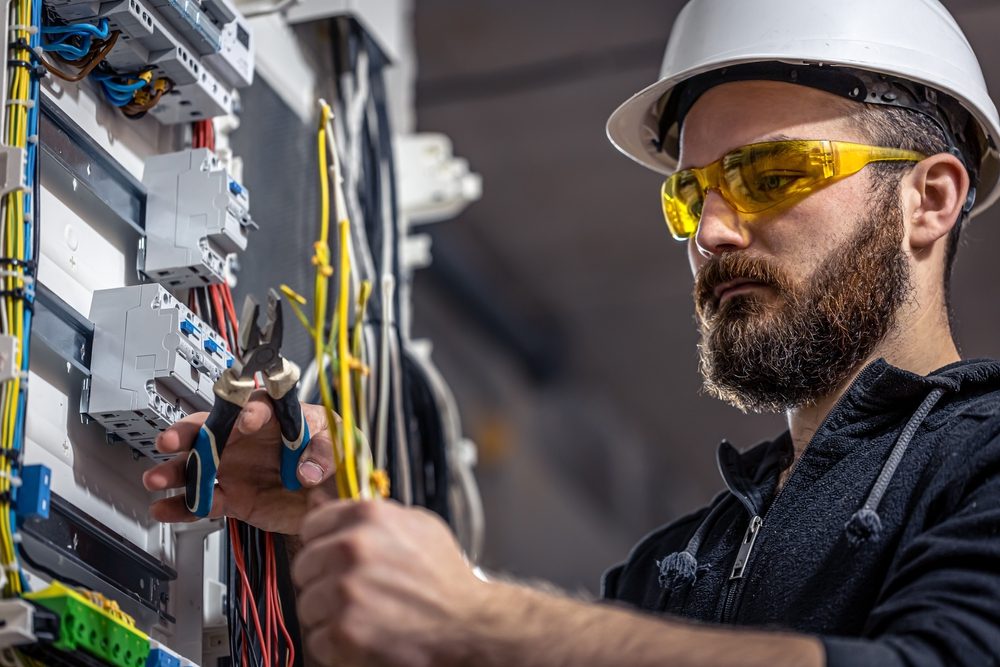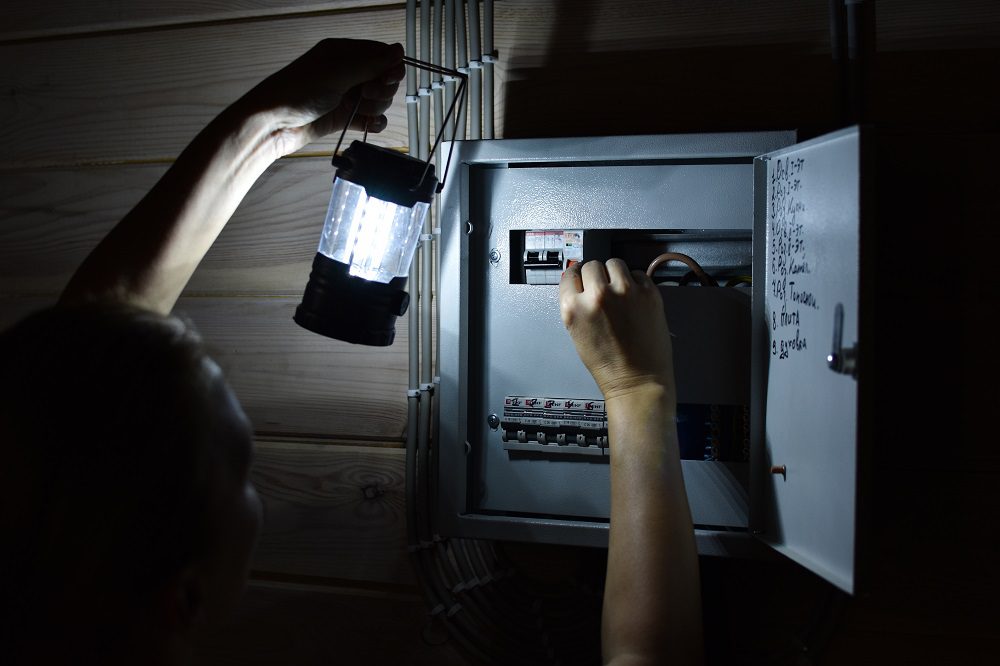
From Diagnosis to Dollars: What Electrical Repair Is, Real-World Examples, Costs, and Three Key Problem Categories
Homeowners in Charlotte, NC search for electrical help when something flickers, trips, or simply will not power on. They also search when selling, remodeling, or adding a high-draw appliance. Clear answers save time and money. This article explains what is electrical repair, how a licensed electrician diagnoses issues, what repairs cost in Charlotte neighborhoods from Dilworth to Ballantyne, and which problems deserve fast action.
What electrical repair means
Electrical repair is the work of diagnosing faults in a home’s electrical system and restoring safe, code-compliant operation. It covers everything from a loose device connection to a failed service panel. In practice, it blends three tasks: test, isolate, and correct. A technician measures voltage and resistance, determines the faulty segment or component, then repairs or replaces wire, devices, breakers, or equipment to meet the National Electrical Code and local Charlotte-Mecklenburg inspections.
Repairs differ from upgrades. Replacing a worn outlet is a repair; adding dedicated circuits for a workshop is an upgrade. Many jobs are mixed. For example, a tripping kitchen circuit may lead to repair of a bad GFCI and an upgrade to AFCI/GFCI protection to meet current standards.
How diagnosis works in a Charlotte home
Electricians start with symptoms and a map of the home’s circuits. They ask which lights or outlets fail, what was turned on when the issue began, and whether any recent work occurred. Then they use a tester or multimeter to confirm power at the service panel, branch circuit, and device. Infrared cameras help find overheated connections. Non-contact voltage testers flag live conductors in tight boxes.

In older Myers Park houses with plaster walls, access is careful and minimal. In newer builds in Berewick, panel labeling can be accurate, which speeds isolation. Surge damage often shows up after summer storms in Steele Creek, so line-to-neutral tests and inspection of surge protective devices matter.
The fastest path is systematic: verify the panel feed, verify the breaker, verify the neutral, then check the device and downstream loads. Skipping steps wastes time and increases cost.
Three key problem categories
Most service calls fall into one of three buckets: power loss and tripping, heat and arc risk, or control and nuisance faults.
Power loss and tripping. A breaker trips due to overload, short, or ground fault. Overload means too many loads on one circuit, common in townhomes around University City where space heaters share a circuit with entertainment centers. A short or ground fault points to damaged insulation or a miswired device. GFCIs in bathrooms and kitchens in South End often trip from moisture or worn devices.
Heat and arc risk. Loose terminations, backstabbed receptacles, and aluminum branch wiring from 1960s and 1970s builds in parts of east Charlotte create resistance and heat. Signs include warm cover plates, buzzing at a switch, or a faint scorch smell. These issues require immediate repair because heat precedes failure.
Control and nuisance faults. Dimmers that flicker LED cans in Dilworth, motion sensors that false-trigger on porches in Plaza Midwood, and smart switches that crash Wi-Fi circuits fall here. These are not always unsafe, but they waste energy, shorten lamp life, and frustrate daily use.
Real-world examples from local service
A GFCI that will not reset in a SouthPark condo. The upstream GFCI in the kitchen protected the bathroom. A new hair dryer tripped it. The tech found a failed GFCI device and a bootlegged neutral. Fix: replace with a listed GFCI, isolate neutrals per code, re-label the bathroom circuit. Time on site: about 1 hour.
A garage circuit tripping each time what is electrical repair a freezer cycles in Ballantyne. Load measurement showed a 15-amp shared circuit running the opener, lighting, and freezer. The breaker was fine; the issue was overload. Options: move the freezer to a dedicated 20-amp circuit or install a new 20-amp run with a tamper-resistant receptacle. The homeowner chose a new dedicated circuit to protect stored food.

An intermittent light outage in a 1940s bungalow near NoDa. Multiple backstabbed connections in a switch loop caused arcing. The fix: re-terminate with the screw lugs, pigtail conductors with proper wirenuts, and replace a heat-damaged switch. The arc marks were faint but present on the old device.

What repairs typically cost in Charlotte
Pricing reflects time, materials, and access. Local permit fees and inspection rules can add cost on larger fixes. These ranges come from recent jobs in the Charlotte area:
- Troubleshooting and minor repairs: 149 to 350 for diagnosis and a small fix, such as a bad switch, loose neutral, or a single GFCI replacement.
- Device replacements: 120 to 250 per location for standard receptacles, switches, or dimmers, including quality devices and proper terminations. Smart switches often add 50 to 120 per device.
- Breaker and arc-fault/GFCI upgrades: 175 to 350 per breaker, depending on brand availability and panel condition. Combos run higher.
- Dedicated circuit additions: 450 to 1,200 for a 20-amp circuit to a reachable location. Long runs, finished basements, or attic fishing can raise cost to 1,500 to 2,000.
- Panel repairs or replacements: tightening and replacing a failing main breaker lug can be 250 to 600. Full panel replacement with new breakers and labeling usually ranges from 2,000 to 4,500 in Charlotte, depending on service size and grounding upgrades.
These figures assume normal access and code-compliant grounding and bonding. Aluminum branch wiring remediation, knob-and-tube, or water-damaged panels increase scope and cost.
Safety rules a homeowner should follow
Electric shock and fire risk increase when problems get ignored. Three simple practices reduce danger. First, stop resetting a breaker that trips repeatedly. Frequent trips signal real faults. Second, stop using outlets or switches that feel warm, smell burnt, or buzz. Heat indicates a loose connection. Third, call for help if lights dim when large appliances run or if there is visible arcing.
What is included in a professional repair visit
A thorough visit includes a visual inspection at the panel, testing of the affected circuit, and full documentation. The electrician identifies wire gauge, breaker rating, and device type, then checks terminations and boxes. If the equipment is Federal Pacific or Zinsco, the tech will explain failure history and replacement options. A good visit ends with labeled circuits and a brief report of findings.
Technicians carry standard devices, breakers for common panels, wirenuts, pigtails, bonding jumpers, and AFCI/GFCI breakers. Specialty breakers for certain panels may require ordering. That is why honest upfront ranges help the homeowner decide quickly.
Common fixes that add value
Some repairs solve more than a single problem. Upgrading kitchen and laundry circuits to dual-function AFCI/GFCI breakers meets current code and reduces trips from nuisance arc signatures. Replacing backstabbed devices with screw-terminal connections improves reliability across the home. Installing a whole-home surge protector at the service can prevent repeat electronics failures after summer storms that roll across Lake Norman into the city.
In crawlspace homes in Chantilly, corrosion at splices and boxes is common. Replacing rusted boxes with listed, weather-resistant enclosures and correcting unsupported cable runs supports both safety and resale.
DIY versus calling Ewing Electric Co.
Many homeowners can reset a tripped GFCI, replace a lamp, or test bulbs. Beyond that, the risk rises. Mixed neutrals, multi-wire branch circuits, or shared circuits across a tandem breaker array can surprise even handy homeowners. DIY mistakes include landing two neutrals under one terminal, using the wrong breaker type in a brand-specific panel, or burying inaccessible junctions behind drywall. These errors later cause heat, shock risk, or insurance issues during a sale.
Ewing Electric Co. serves Charlotte, Matthews, Pineville, Huntersville, and nearby neighborhoods. The team handles fast troubleshooting, device and breaker replacements, dedicated circuits, EV charger circuits, and panel work. The company schedules in tight windows, arrives with stocked vans, and provides clear pricing before work begins.
How to decide if a repair is urgent
Think in terms of risk and impact. Any burning smell, visible arcing, or hot device is urgent. Water exposure near electrical, such as a roof leak above a panel in a Dilworth addition, is urgent. Repeated breaker trips that occur with no new loads need prompt attention. Nuisance flicker on one LED fixture can wait a day or two, but a fridge or freezer on a tripping circuit should be addressed the same day to protect food and equipment.
Straight answers to common local questions
Why do LED lights flicker with dimmers in older houses? Many legacy dimmers expect incandescent loads. The solution is a compatible LED dimmer, correct minimum load, and stable neutral. The fix usually runs 120 to 250 per location.
Why does the bathroom outlet trip when nothing is plugged in? The GFCI may protect downstream loads in another room. Moisture, a worn device, or a bootlegged neutral can cause this. Testing the line and load terminals and correcting neutrals resolves it.
Should a panel replacement be considered preventive? In many Charlotte homes with recalled equipment or rust, yes. It removes a known failure point, adds room for future circuits, and can improve insurance acceptance.
What to expect during a service call in Charlotte
Arrival is on time with a quick walk-through. The tech asks about symptoms and shows a simple plan: diagnose, confirm price, repair. Power interruptions are kept short and staged so refrigerators and critical devices stay on where possible. Drop cloths, shoe covers, and cleanup are standard. The team labels circuits and explains what changed. Payment is easy on-site, and permits are pulled where required.
Getting help today
If the question is what is electrical repair, the answer is simple: it is the focused work of finding faults and restoring safe power. If the need is immediate, Ewing Electric Co. can help. The office books same-day troubleshooting in Charlotte, including South End, NoDa, Plaza Midwood, Steele Creek, and Ballantyne. Call to describe the symptom, share the neighborhood, and get a clear window and price range. A licensed electrician will diagnose, fix, and document the repair so the home runs safely again.
Ewing Electric Co provides dependable residential and commercial electrical services in Charlotte, NC. Family-owned for over 35 years, we handle electrical panel upgrades, EV charger installation, generator installation, whole-home rewiring, and 24/7 emergency repairs. Our licensed electricians deliver code-compliant, energy-efficient solutions with honest pricing and careful workmanship. From quick home fixes to full commercial installations, we’re known for reliable service done right the first time. Proudly serving Charlotte, Matthews, Mint Hill, and nearby communities. Ewing Electric Co
7316 Wallace Rd STE D Phone: (704) 804-3320 Website:
https://ewingelectricco.com/ |
Google Site
Social:
Facebook |
Instagram |
Twitter
Map: View on Google Maps
Charlotte,
NC
28212,
USA